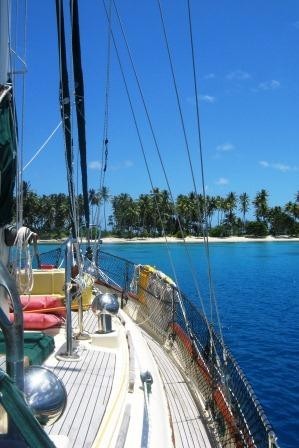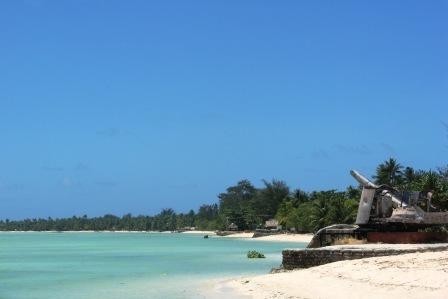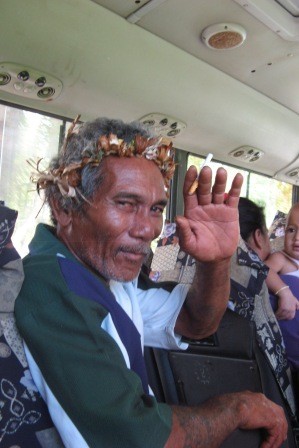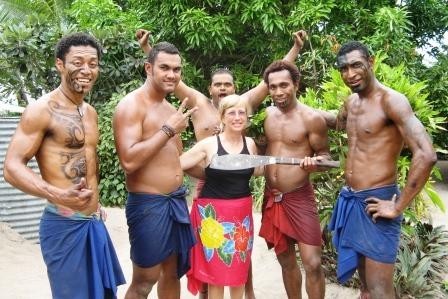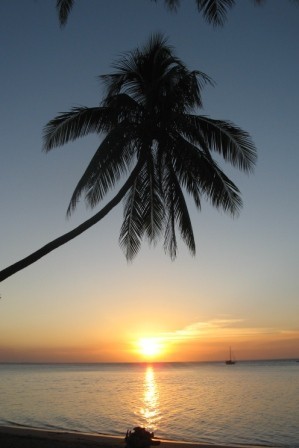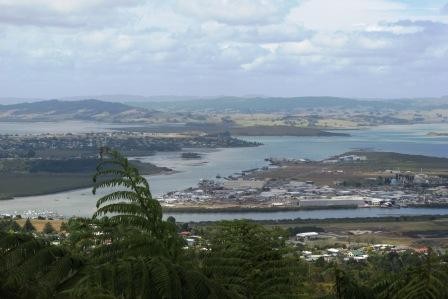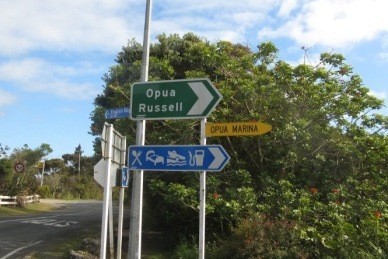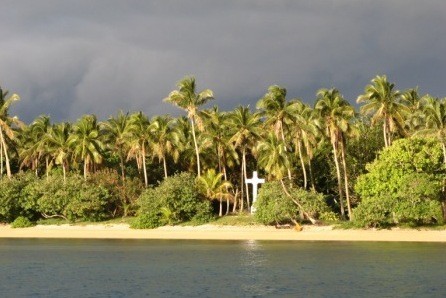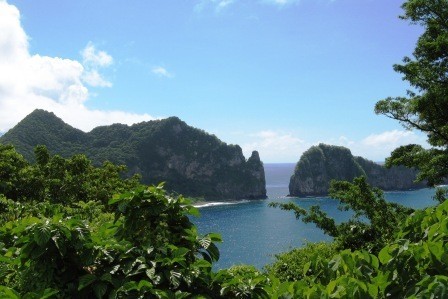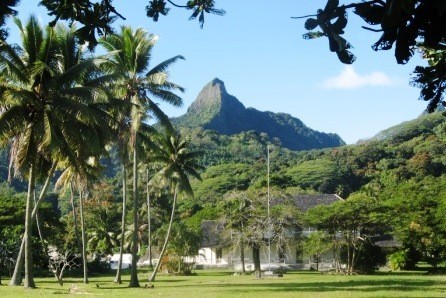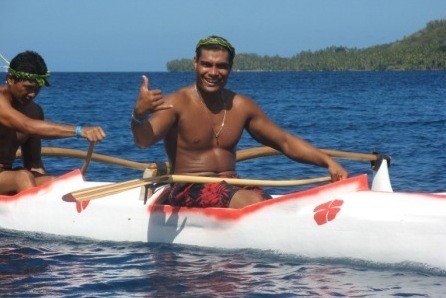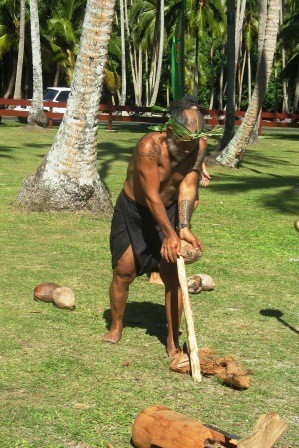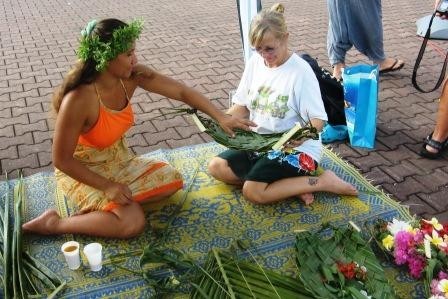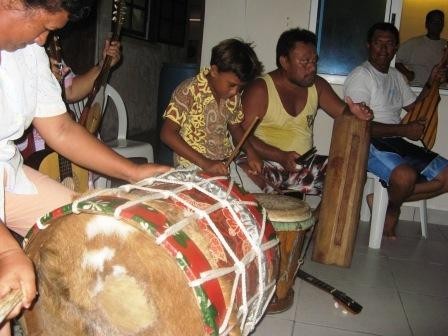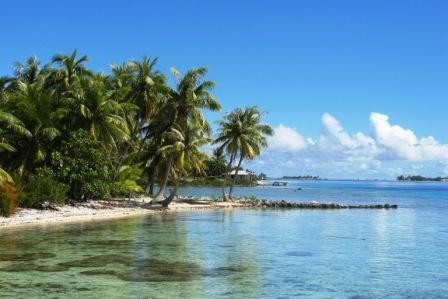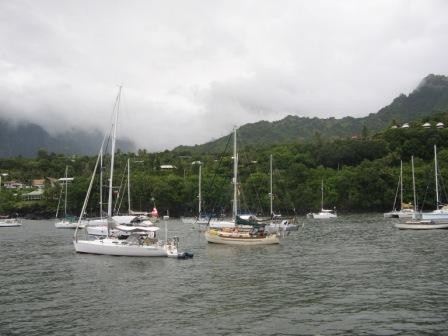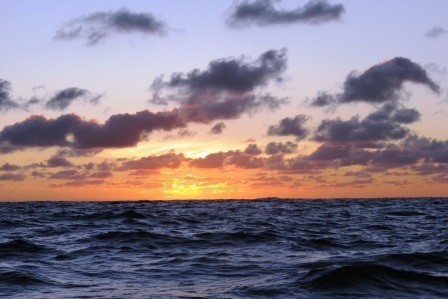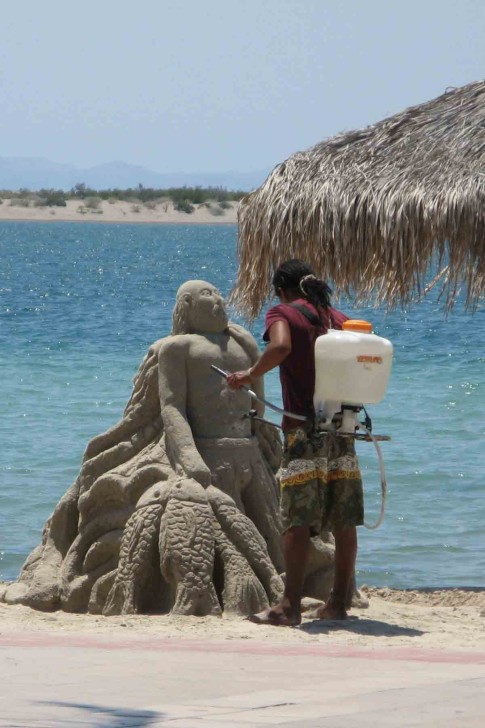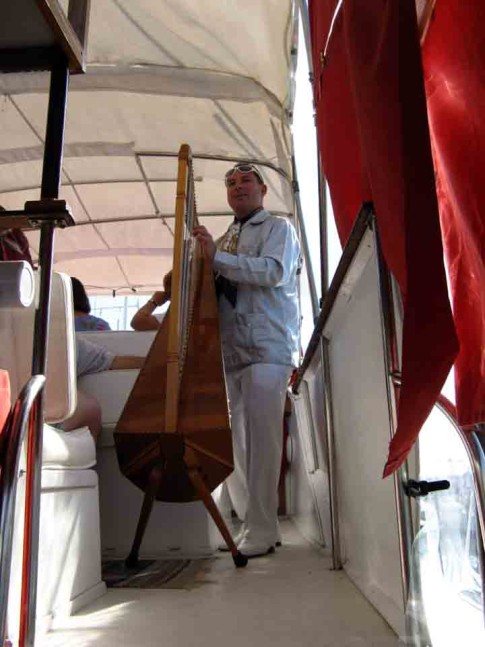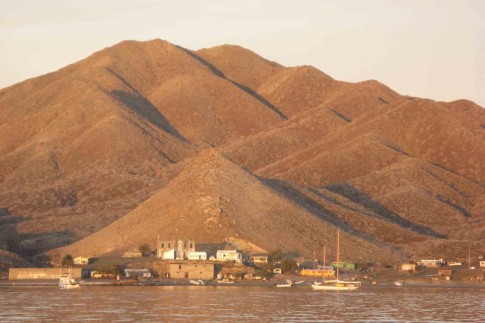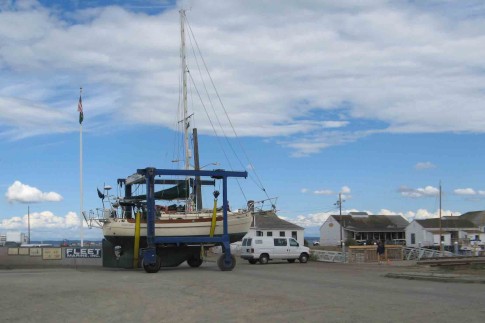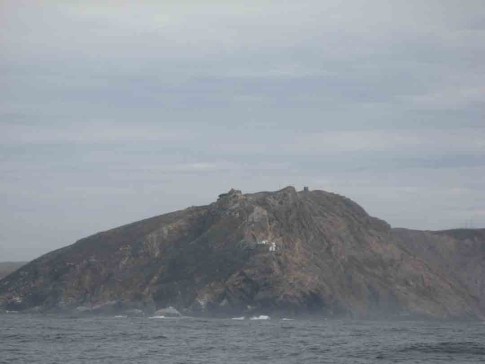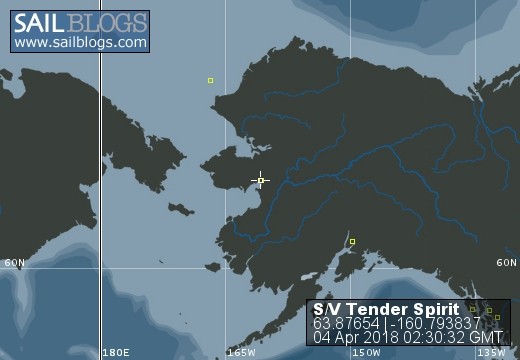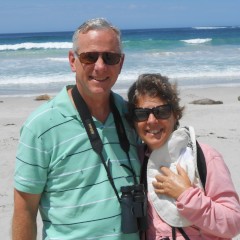
S/V Tender Spirit - Part II
We tried to be landlubbers... it didn’t work out. So, here it begins all over again.
29 January 2019
12 January 2019
09 January 2019
08 December 2018
18 October 2018
03 April 2018 | Unalakleet, Alaska
29 October 2017 | Unalakleet, Alaska
19 July 2015 | Unalakleet, Alaska
30 April 2013 | Point Hope
30 September 2012
04 June 2012 | Haines
03 June 2012
20 April 2012 | Anchorage, Alaska
17 April 2012 | Anchorage, Alaska
17 April 2012 | Anchorage, Alaska
10 January 2012 | Opua, New Zealand
24 December 2011 | Opua, New Zealand
03 December 2011 | Opua, New Zealand
04 November 2011 | Off shore: Destination New Zealand
02 November 2011 | Off shore: Destination New Zealand
Provisioning: A Step By Step Approach
30 September 2009 | Vava'u, Tonga
Joan
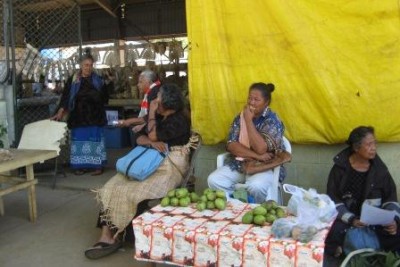
So, you are thinking about that off-shore passage, a new adventure to a far away destination. OK, it maybe not be so far away, but provisioning a vessel can be an adventure all of its own. Cruising often involves a "change of plans", therefore flexibility must be built into any provisioning effort. Often, it is impossible to know what will be available at the local markets. The adventure really gets fun in a foreign country with shelves filled with unfamiliar items, packaged in a different language. This article is a step by step approach to provisioning a cruising vessel for extended voyaging where provisions may be difficult to obtain.
The Research
Before rushing off to the markets, do your research. Keep track of everything in a small notebook dedicated to provisioning. All of this information will now be readily available for reference whenever it is needed.
Know the Boat:
Space and tools will define and limit any provisioning effort. Space is obvious. Know exactly how much space is available for provisions. Measure the locker opening especially if large items will be stowed inside. Will the beloved wok really fit through the locker opening? Be aware of the quality of that locker. Does that locker tend to pick up moisture? A damp prone locker will be a great place for items sealed in waterproof containers. A locker near the engine room could get warm in a hurry. Nothing is more disappointing than putting the chocolate stash in such a location only to discover a melted mess instead of a treasured treat!
Tools include everything from cooking implements to how food is preserved or kept fresh. Is there refrigeration? A freezer? Think in terms of non-perishables for most bulk items especially if a long passage is in the planning. Refrigeration is wonderful, but often the weakest link in the provisioning game. They are prone to failure at the most inconvenient time. Refrigeration also is one of the biggest consumers of power on a cruising vessel. If generating power becomes a sudden issue off shore, the first things that get unplugged are non-essentials. This could mean the refrigeration.
Having a stove and oven is of course, essential. Be sure to measure the oven capacity for pan size and overhead clearance. This will be important with items such as sizing a turkey or pizza. Consider a heavy duty thermos that cannot break when dropped. We always keep it filled with hot water when on a passage. Now anybody can have a favorite hot beverage or instant soup at any time. Another galley tool to have is a small 4 quart pressure cooker. It is especially useful for soups and stews. When the boat is rocking and rolling, lock down the lid and leave the pressure regulator off. This prevents hot liquids from leaving the pot prematurely and possibly burning the cook.
One tip we found helpful with off-shore planning is the use of a "lunch box". Fill a plastic box with items to be eaten during the day or night that does not require cooking. It's great when the cook is asleep, or when it is too rough for anything more complicated.
Food Preferences
This sounds too obvious, but it's important to know what everyone on board likes to eat. Most cruisers tend to be couples and family members. Have a family meeting. Be sure to include everyone on board in these decisions. If you are taking crew, they too must participate. Gather together all of the favorite recipes and a list of foods everyone likes like to eat. Be sure to include snack preferences and individual favorites. It is also important to have a second list of foods that are not liked. Be sure to have knowledge of any food allergies and dietary preferences. To discover that a crew member has special dietary requirements the day before leaving on a passage could make provisioning a last minute nightmare.
If you are in a foreign country you will be trying new foods. Try to set aside time to purchase small amounts of local products to sample. Write on the label where it was purchased for future reference. Save the label if everyone likes the new product. Now it can be recognized for a future purchase. Always sample items that you plan to buy in bulk or in a case lot. This will eliminate some unwanted surprises later.
Menu choices
Develop a list of meals that everyone likes using the food preferences list gathered at the "family meeting". While devising these meals, be sure to include simply prepared dishes for when poor weather or sea sickness puts a damper on how much time and effort will be spent in the galley. This meal list will help create your shopping list of ingredients.
While creating great meal ideas, think about the fresh ingredients that will be required for a recipe. You will need to eat perishable products early in a passage. This timing is also important for clearing into a new country where some food products are not allowed. Be sure to check on regulations before buying in bulk. Usually fresh produce, dairy, and meat will the greatest concern. Processed food is seldom an issue.
The inventory
Inventory exactly now on board. Write down the item, quantity, and how it is packaged into the notebook. It helps to have categories such as food groups. Be sure to list spices, condiments and sauces. Don't forget to include paper products, soaps, toiletries and other consumable household items.
Length of time guideline
Decide how many months worth of provisions are needed on board. This time frame will vary greatly depending on where the provisioning will take place, the cruising destination, and the length of the passage. If we are at a location where food products are reasonably priced, and readily available, I will stock up quite heavily especially if we will be cruising in a traditionally expensive area. Also think about the exchange rate. This can make a huge difference when purchasing overseas provisions. For example, Mexico has a great variety of non-perishable food at low prices. We planned a Pacific crossing to the Marquesas. We would then spend the season exploring in the South Pacific. We had heard that the cost of food was high, and often just plain unavailable in rural areas. At that time, the US dollar was very strong in Mexico. Therefore, we provisioned heavily so that we would not need to do much provisioning until we reach New Zealand. This would be about a 9 month period of time.
Quantities
Deciding how much of a product to have on hand can be intimidating. I always tell myself not to worry because mistakes can always be remedied. Besides, Plans change. Tastes change. Often, what is wanted, and what is available will always be a challenging puzzle to solve. Sometimes a much desired item will be found, but beyond the budget or it no longer fits in the locker.
Figuring out how much of a particular item to purchase is straightforward with a bit of planning and practice. Estimate how long a certain quantity lasts. If this is unknown, write down in that notebook the date and amount purchased and then, the date that it is nearly consumed. This will be easy with some things, harder for others. If there is uncertainty, buy more than is estimated especially if it's something really important like toilet paper. Also, buy more if something will be difficult to replace like specialty items that may be hard to find.
Packaging
Before rushing off to the markets, think about the packaging sizes and how to stow it all. If your boat is like mine, there are lots of lockers for stowage, but with small openings. I find that I have better luck buying food in the small size packages and then buy a case of it. With just the two of us on board the boat it makes no sense to buy the super-sized restaurant cans. By having smaller sizes, we also waste less.
Along with packaging, consider what form of food preservation is needed. Since we have a very small refrigerator, we use it for meat, opened dairy products, mayonnaise, and a couple of cold drinks. For a long passage we will switch the fridge to its freezer setting and use it exclusively for frozen meat and ice. Once the meat is consumed, then it gets turned down again. Everything else is packaged or preserved in some fashion. A permanent freezer on board is truly a cook's luxury. Please be aware though that we have been the recipients on numerous occasions of nice steaks and pork roasts when a fellow cruiser's freezer failed. In other words, have a back-up plan when provisioning for a long off-shore passage.
There are a lot of foods out there that do not have to be refrigerated. We buy only enough fresh fruit to last about a week when the tropical temperatures soar. We have had better luck with citrus fruit and watermelons. We ate the last watermelon the night before our arrival at Hiva Oa after a 34 day passage. Root vegetables last longer especially potatoes and onions. For hot tropical conditions, think short term. On the other hand, some fruit and vegetables last for several weeks in a more moderate climate. One prime example is carrots. At cool temperatures they can last for over a month. On a hot Sea of Cortez morning I bought several from the market. By dinner time, they were soft and wilted, by the following day, they were liquefied. I was absolutely amazed at how fast they went bad! If possible experiment before you leave with the local produce and climate. Buying local produce does make a big difference.
The ever amazing egg will last a month or more without refrigeration. This depends of course on how fresh the egg really is and the climate. Whenever possible, purchase eggs that have not been refrigerated. Stow eggs in a ventilated container. Periodically turn the container up-side down to rotate the eggs. As they age, they get runnier. Crack eggs in a separate dish just in case one of them goes bad ahead of time. Eggs are great when fresh meat is just a memory. Even in the hot tropical summer we have had great luck with them.
Other items to consider are single serving size condiments like what is found at fast food restaurants. They can be great back-up items that don't require refrigeration. Hard cheeses still in the wax coating and processed cheese such as Velveeta will last. Keep an eye on the packaging however. Occasionally check the seals. Once opened, the hard cheeses need to be refrigerated. The formation of mold on the cheese can be delayed by using a very clean knife to cut it with and never touching the cheese brick with bare hands. Once mold forms, just cut it off. The rest of the cheese is still edible.
To Market, To Market
Finally, it's time to head to the markets. Be sure to have the notebook on hand. It's easy to flip through all of the lists should any information be needed. When there is something on the shelf that is interesting, the notebook can be consulted. If it's not on the purchase list, it may have either been forgotten or not considered at the time. Check the food inventory to see if there is any on board and how much is on hand. I learned this little lesson the hard way when I was teaching at a small Alaskan village that had no stores. I saw applesauce on the shelf, and couldn't remember how much I had left. Thinking I was low, I bought 2 cases. When I arrived back at the village, I discovered that I still had a case left, and that I had forgotten about two more cases that I had been ordered earlier. So, we had absolutely no shortage of applesauce....for the next two years.
When doing a major provisioning that involves several months or even a year's worth of basic provisions, start purchasing in places where case-lot items are sold, especially in the sizes that are desired. Buying in case lots will generally cost less than the same product sold individually. Sometimes the larger super-sized containers may be too big for adequate stowage. We eat a lot of rice, so I will buy 25 or more pounds total, but in one pound packages, instead of a 25 or 50 pound sack.
The next market will be a large supermarket. While picking out the listed items, go down the isles and look for extra stuff. Pick up those extra items that will put a smile on someone's face when it is most needed. I'll pick up a boxed cake mix, or a favorite food for special occasions. This is the time to get some pre-packaged items that didn't make it on the lists. Allow a bit of indulgence without loosing sight of where it will be stowed. Spend a bit more time in the spice and sauce isles looking for extra items to make meals more interesting.
Put off buying produce, meat, and other perishable items until a day or two before leaving port. Don't be afraid to ask around to find the best produce markets. Talk to both local people and other cruisers.
Stowage Tips
Was there life before Zip-sealed type bags, and snap down plastic containers? Those two items sure make life much easier. Modern packaging practices create such a sad waste of valuable resources, and needless pollution. For cruisers it also wastes valuable space. The first thing I do when returning from a day of "hunting and gathering" is the process of repackaging.
All boxed products get completely repackaged. Cardboard invites bugs and moisture. Remove the contents from boxes. Cut out the instructions and put it all in a zip plastic bag. Double bagging helps keep moisture and boat odors out. Treat all items in plastic packaging in a similar fashion. If it's a large bag, split the contents into smaller bags. If it's already in a small package, put the whole thing in an additional zip bag without removing the plastic. This is especially important for items such as crackers that can get stale quickly. We stock up on instant soups and noodles that come in Styrofoam cups. They also get repackaged. Crunch up the noodles enough to get them in a quart zip bag. To serve, put the noodles in a large coffee mug and after adding water, cover with a small plate or the mug's lid. Keep Styrofoam off the boat because it is bulky and not biodegradable. Think ahead about where to put the garbage later. Those cups really add up to valuable space.
I wish you luck in all of your provisioning, and hope this little guide will help you. Provisioning is a learned process based on individual needs and situations. Deciding what kinds of food to take is a personal choice based on your tastes, space, and preservation options. Good luck and bon appetite!
The Research
Before rushing off to the markets, do your research. Keep track of everything in a small notebook dedicated to provisioning. All of this information will now be readily available for reference whenever it is needed.
Know the Boat:
Space and tools will define and limit any provisioning effort. Space is obvious. Know exactly how much space is available for provisions. Measure the locker opening especially if large items will be stowed inside. Will the beloved wok really fit through the locker opening? Be aware of the quality of that locker. Does that locker tend to pick up moisture? A damp prone locker will be a great place for items sealed in waterproof containers. A locker near the engine room could get warm in a hurry. Nothing is more disappointing than putting the chocolate stash in such a location only to discover a melted mess instead of a treasured treat!
Tools include everything from cooking implements to how food is preserved or kept fresh. Is there refrigeration? A freezer? Think in terms of non-perishables for most bulk items especially if a long passage is in the planning. Refrigeration is wonderful, but often the weakest link in the provisioning game. They are prone to failure at the most inconvenient time. Refrigeration also is one of the biggest consumers of power on a cruising vessel. If generating power becomes a sudden issue off shore, the first things that get unplugged are non-essentials. This could mean the refrigeration.
Having a stove and oven is of course, essential. Be sure to measure the oven capacity for pan size and overhead clearance. This will be important with items such as sizing a turkey or pizza. Consider a heavy duty thermos that cannot break when dropped. We always keep it filled with hot water when on a passage. Now anybody can have a favorite hot beverage or instant soup at any time. Another galley tool to have is a small 4 quart pressure cooker. It is especially useful for soups and stews. When the boat is rocking and rolling, lock down the lid and leave the pressure regulator off. This prevents hot liquids from leaving the pot prematurely and possibly burning the cook.
One tip we found helpful with off-shore planning is the use of a "lunch box". Fill a plastic box with items to be eaten during the day or night that does not require cooking. It's great when the cook is asleep, or when it is too rough for anything more complicated.
Food Preferences
This sounds too obvious, but it's important to know what everyone on board likes to eat. Most cruisers tend to be couples and family members. Have a family meeting. Be sure to include everyone on board in these decisions. If you are taking crew, they too must participate. Gather together all of the favorite recipes and a list of foods everyone likes like to eat. Be sure to include snack preferences and individual favorites. It is also important to have a second list of foods that are not liked. Be sure to have knowledge of any food allergies and dietary preferences. To discover that a crew member has special dietary requirements the day before leaving on a passage could make provisioning a last minute nightmare.
If you are in a foreign country you will be trying new foods. Try to set aside time to purchase small amounts of local products to sample. Write on the label where it was purchased for future reference. Save the label if everyone likes the new product. Now it can be recognized for a future purchase. Always sample items that you plan to buy in bulk or in a case lot. This will eliminate some unwanted surprises later.
Menu choices
Develop a list of meals that everyone likes using the food preferences list gathered at the "family meeting". While devising these meals, be sure to include simply prepared dishes for when poor weather or sea sickness puts a damper on how much time and effort will be spent in the galley. This meal list will help create your shopping list of ingredients.
While creating great meal ideas, think about the fresh ingredients that will be required for a recipe. You will need to eat perishable products early in a passage. This timing is also important for clearing into a new country where some food products are not allowed. Be sure to check on regulations before buying in bulk. Usually fresh produce, dairy, and meat will the greatest concern. Processed food is seldom an issue.
The inventory
Inventory exactly now on board. Write down the item, quantity, and how it is packaged into the notebook. It helps to have categories such as food groups. Be sure to list spices, condiments and sauces. Don't forget to include paper products, soaps, toiletries and other consumable household items.
Length of time guideline
Decide how many months worth of provisions are needed on board. This time frame will vary greatly depending on where the provisioning will take place, the cruising destination, and the length of the passage. If we are at a location where food products are reasonably priced, and readily available, I will stock up quite heavily especially if we will be cruising in a traditionally expensive area. Also think about the exchange rate. This can make a huge difference when purchasing overseas provisions. For example, Mexico has a great variety of non-perishable food at low prices. We planned a Pacific crossing to the Marquesas. We would then spend the season exploring in the South Pacific. We had heard that the cost of food was high, and often just plain unavailable in rural areas. At that time, the US dollar was very strong in Mexico. Therefore, we provisioned heavily so that we would not need to do much provisioning until we reach New Zealand. This would be about a 9 month period of time.
Quantities
Deciding how much of a product to have on hand can be intimidating. I always tell myself not to worry because mistakes can always be remedied. Besides, Plans change. Tastes change. Often, what is wanted, and what is available will always be a challenging puzzle to solve. Sometimes a much desired item will be found, but beyond the budget or it no longer fits in the locker.
Figuring out how much of a particular item to purchase is straightforward with a bit of planning and practice. Estimate how long a certain quantity lasts. If this is unknown, write down in that notebook the date and amount purchased and then, the date that it is nearly consumed. This will be easy with some things, harder for others. If there is uncertainty, buy more than is estimated especially if it's something really important like toilet paper. Also, buy more if something will be difficult to replace like specialty items that may be hard to find.
Packaging
Before rushing off to the markets, think about the packaging sizes and how to stow it all. If your boat is like mine, there are lots of lockers for stowage, but with small openings. I find that I have better luck buying food in the small size packages and then buy a case of it. With just the two of us on board the boat it makes no sense to buy the super-sized restaurant cans. By having smaller sizes, we also waste less.
Along with packaging, consider what form of food preservation is needed. Since we have a very small refrigerator, we use it for meat, opened dairy products, mayonnaise, and a couple of cold drinks. For a long passage we will switch the fridge to its freezer setting and use it exclusively for frozen meat and ice. Once the meat is consumed, then it gets turned down again. Everything else is packaged or preserved in some fashion. A permanent freezer on board is truly a cook's luxury. Please be aware though that we have been the recipients on numerous occasions of nice steaks and pork roasts when a fellow cruiser's freezer failed. In other words, have a back-up plan when provisioning for a long off-shore passage.
There are a lot of foods out there that do not have to be refrigerated. We buy only enough fresh fruit to last about a week when the tropical temperatures soar. We have had better luck with citrus fruit and watermelons. We ate the last watermelon the night before our arrival at Hiva Oa after a 34 day passage. Root vegetables last longer especially potatoes and onions. For hot tropical conditions, think short term. On the other hand, some fruit and vegetables last for several weeks in a more moderate climate. One prime example is carrots. At cool temperatures they can last for over a month. On a hot Sea of Cortez morning I bought several from the market. By dinner time, they were soft and wilted, by the following day, they were liquefied. I was absolutely amazed at how fast they went bad! If possible experiment before you leave with the local produce and climate. Buying local produce does make a big difference.
The ever amazing egg will last a month or more without refrigeration. This depends of course on how fresh the egg really is and the climate. Whenever possible, purchase eggs that have not been refrigerated. Stow eggs in a ventilated container. Periodically turn the container up-side down to rotate the eggs. As they age, they get runnier. Crack eggs in a separate dish just in case one of them goes bad ahead of time. Eggs are great when fresh meat is just a memory. Even in the hot tropical summer we have had great luck with them.
Other items to consider are single serving size condiments like what is found at fast food restaurants. They can be great back-up items that don't require refrigeration. Hard cheeses still in the wax coating and processed cheese such as Velveeta will last. Keep an eye on the packaging however. Occasionally check the seals. Once opened, the hard cheeses need to be refrigerated. The formation of mold on the cheese can be delayed by using a very clean knife to cut it with and never touching the cheese brick with bare hands. Once mold forms, just cut it off. The rest of the cheese is still edible.
To Market, To Market
Finally, it's time to head to the markets. Be sure to have the notebook on hand. It's easy to flip through all of the lists should any information be needed. When there is something on the shelf that is interesting, the notebook can be consulted. If it's not on the purchase list, it may have either been forgotten or not considered at the time. Check the food inventory to see if there is any on board and how much is on hand. I learned this little lesson the hard way when I was teaching at a small Alaskan village that had no stores. I saw applesauce on the shelf, and couldn't remember how much I had left. Thinking I was low, I bought 2 cases. When I arrived back at the village, I discovered that I still had a case left, and that I had forgotten about two more cases that I had been ordered earlier. So, we had absolutely no shortage of applesauce....for the next two years.
When doing a major provisioning that involves several months or even a year's worth of basic provisions, start purchasing in places where case-lot items are sold, especially in the sizes that are desired. Buying in case lots will generally cost less than the same product sold individually. Sometimes the larger super-sized containers may be too big for adequate stowage. We eat a lot of rice, so I will buy 25 or more pounds total, but in one pound packages, instead of a 25 or 50 pound sack.
The next market will be a large supermarket. While picking out the listed items, go down the isles and look for extra stuff. Pick up those extra items that will put a smile on someone's face when it is most needed. I'll pick up a boxed cake mix, or a favorite food for special occasions. This is the time to get some pre-packaged items that didn't make it on the lists. Allow a bit of indulgence without loosing sight of where it will be stowed. Spend a bit more time in the spice and sauce isles looking for extra items to make meals more interesting.
Put off buying produce, meat, and other perishable items until a day or two before leaving port. Don't be afraid to ask around to find the best produce markets. Talk to both local people and other cruisers.
Stowage Tips
Was there life before Zip-sealed type bags, and snap down plastic containers? Those two items sure make life much easier. Modern packaging practices create such a sad waste of valuable resources, and needless pollution. For cruisers it also wastes valuable space. The first thing I do when returning from a day of "hunting and gathering" is the process of repackaging.
All boxed products get completely repackaged. Cardboard invites bugs and moisture. Remove the contents from boxes. Cut out the instructions and put it all in a zip plastic bag. Double bagging helps keep moisture and boat odors out. Treat all items in plastic packaging in a similar fashion. If it's a large bag, split the contents into smaller bags. If it's already in a small package, put the whole thing in an additional zip bag without removing the plastic. This is especially important for items such as crackers that can get stale quickly. We stock up on instant soups and noodles that come in Styrofoam cups. They also get repackaged. Crunch up the noodles enough to get them in a quart zip bag. To serve, put the noodles in a large coffee mug and after adding water, cover with a small plate or the mug's lid. Keep Styrofoam off the boat because it is bulky and not biodegradable. Think ahead about where to put the garbage later. Those cups really add up to valuable space.
I wish you luck in all of your provisioning, and hope this little guide will help you. Provisioning is a learned process based on individual needs and situations. Deciding what kinds of food to take is a personal choice based on your tastes, space, and preservation options. Good luck and bon appetite!
Comments
| Vessel Name: | Tender Spirit |
| Vessel Make/Model: | Hans Christian 41 |
| Hailing Port: | Alaska |
| Crew: | Joan & Chuck |
| About: | |
| Extra: | There are only two unbendable rules on this vessel: 1. We can change our mind. 2. We can change direction. Everything else is flexible. |
Tender Spirit's Photos - S/V Tender Spirit (Main)
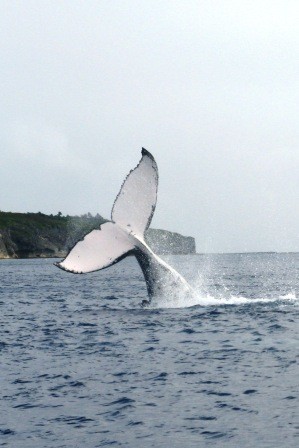 |
This smallest of nations has people with big hearts. Niue is unique in its beautiful caves and chasms. Lush jungles and Humpback whales add to this amazing place.
37 Photos
Created 6 September 2009
|
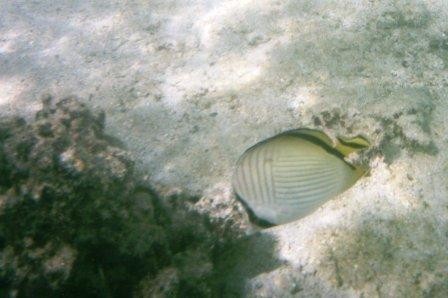 |
My first attempt at using an underwater camera. Photos taken at Moorea.
38 Photos
Created 26 June 2009
|
Adventures of Tender Spirit
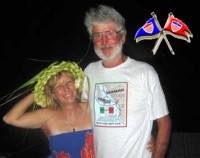
Who: Joan & Chuck
Port: Alaska
Previous Posts
Topics of Interest & Links
- Change of Plans 2017
- 2012 Transitioning back to the Land
- 2011-New Zealand Part II
- 2011 Back to Fiji...Part II
- 2010 Touring Fiji, North to Marshall Islands
- 2010 Northbound from New Zealand
- Gear Review
- 2009 South Pacific-Onward to New Zealand
- 2006-2007 Preparation Posts Before Leaving Alaska
- Cruising Articles
- About Tender Spirit
- 2009 South Pacific Adventure
- 2009 Pacific Crossing
- 2008 & 2009 Mexico Adventure
- 2007 West Coast Adventure
- 2007 Alaska to Washington Passage
- Show All Posts
